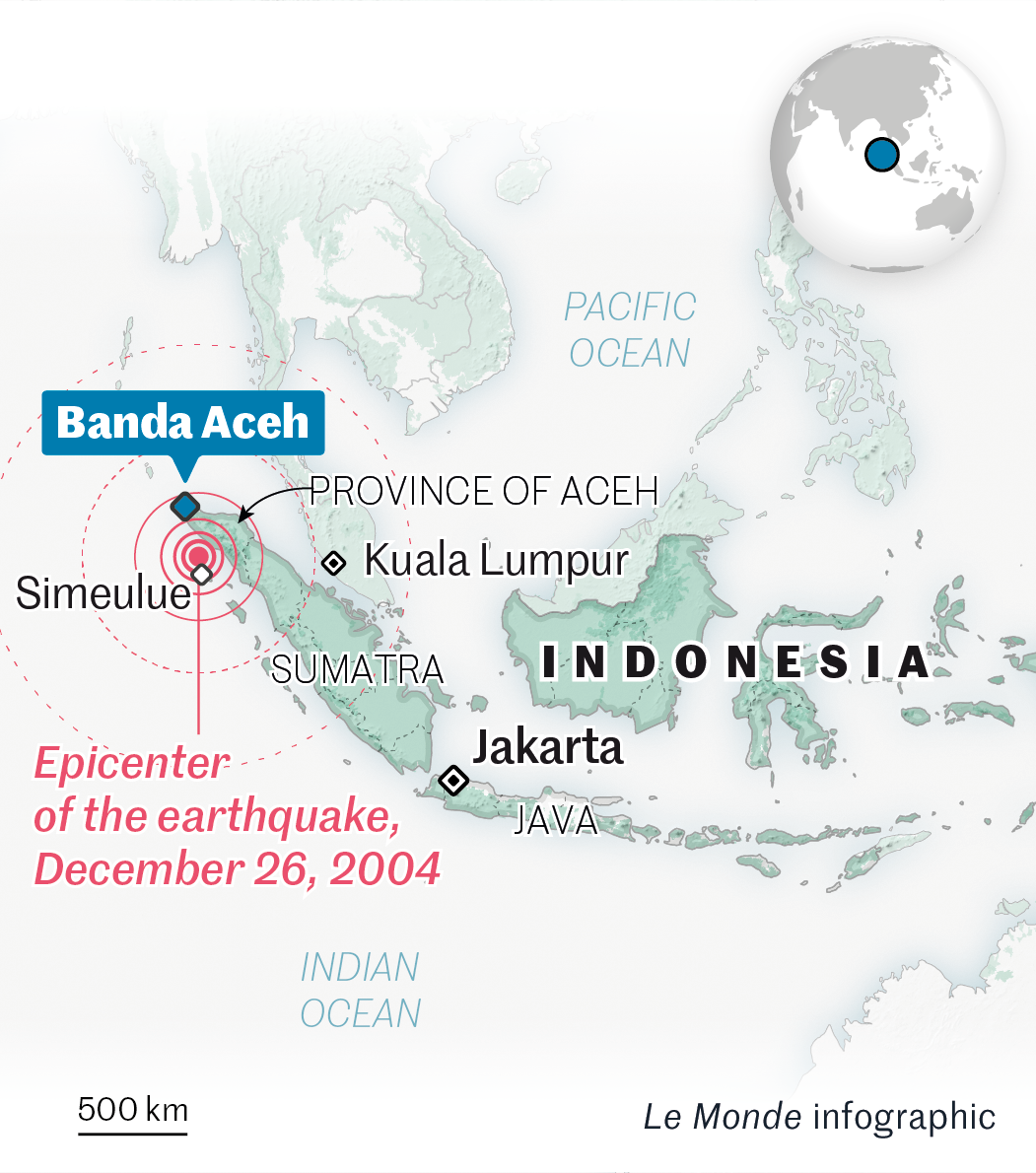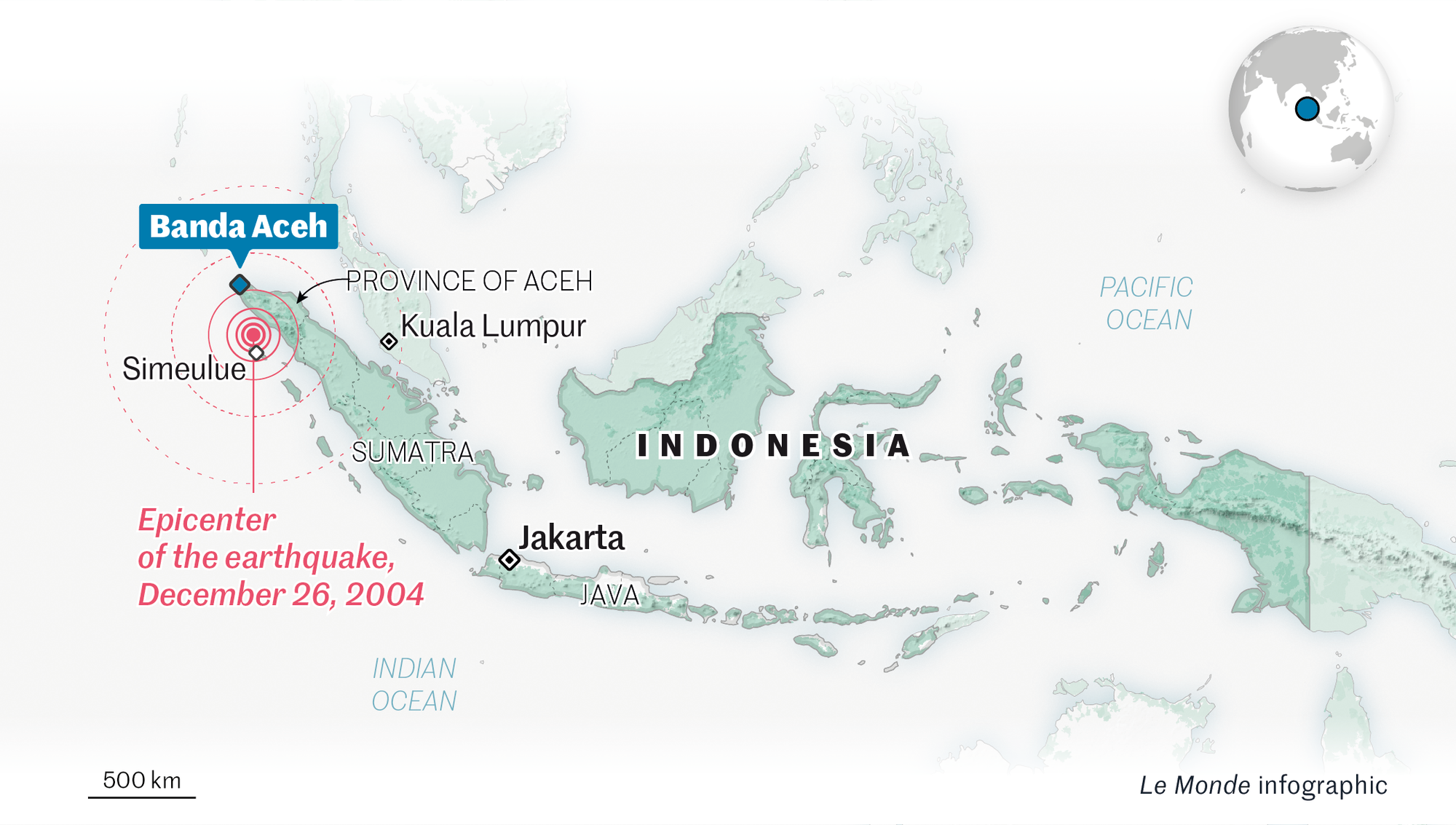

After the 2004 tsunami in Indonesia, a surprising legacy of peace
Feature'Living after a disaster' (1/6). Le Monde retraces the paths of major natural disasters and shows how life has gone on in the aftermath, the ongoing stories and lessons learned. On December 26, 2004, a series of tsunami waves hit the island of Sumatra, killing more than 160,000 people in the province of Aceh, which at the time was gripped by warfare with separatist guerrillas. As humanitarian aid poured in, international mediation helped facilitate peace agreements with the Indonesian government.
As tall as a three-story building, the stranded ship in the center of the town of Banda Aceh, at the northern tip of the large Indonesian island of Sumatra, is a tourist attraction in its own right: Families with children climb the iron staircase along its hull, and then take selfies on a footbridge. From the roof, you can look out over the city, where the domes of the mosques gleam, while the cone of a dormant volcano stands out on the eastern horizon. The sea is nowhere in sight, and for good reason. The Apung 1 had been a 2,600-ton floating diesel-fueled electric generator barge moored in this provincial capital's port, until the December 26, 2004, tsunami dragged it 5 kilometers inland. The huge flat-bottomed barge left several houses flattened in its wake. For a long time, its rusty silhouette had a slightly sinister atmosphere, before local authorities turned it into a real memorial park around 10 years ago, complete with souvenir stores and pretty flowerbeds.

The tsunami museum stands nearby, housed in a curved architectural design reminiscent of the wave. It tells the story of the tragedy in photos and film. In another district, a small trawler perched on the roof of a house – the only one left of dozens, all since cleared away – has been transformed into a memorial. Along with the Apung 1, these are the few visible signs in Banda Aceh that can be clearly associated with the natural disaster that claimed the lives of 78,400 of the city's 269,000 inhabitants almost 19 years ago. A further 89,000 perished in the surrounding countryside and along the province's coastline, bringing the total death toll for Indonesia to a little over 167,000. Along the Thai, Sri Lankan and Indian coasts, the tsunami claimed a further 60,000 lives.
The vast Indonesian archipelago stretches perilously around the "Pacific Ring of Fire", a belt of volcanoes and intense seismic activity, in a semi-circle spanning from New Zealand to southern Chile. And yet, nothing could have prepared the Indonesians for this death toll of biblical proportions.
In contrast, the island of Simeulue, with a population of 70,000 and very close to the epicenter, only suffered seven casualties. This was because – ever since a tsunami killed half the island's population in 1907 – Simeulean islanders have been telling their children how dangerous "smong" is, in the nursery rhymes they sing to them. If they ever see the sea receding after an earthquake, the song goes, they need to get as high up in the mountains as possible. The word "smong," derived from the native Simeuluean dialect, has since been incorporated into the Indonesian dictionary.
You have 86.4% of this article left to read. The rest is for subscribers only.


